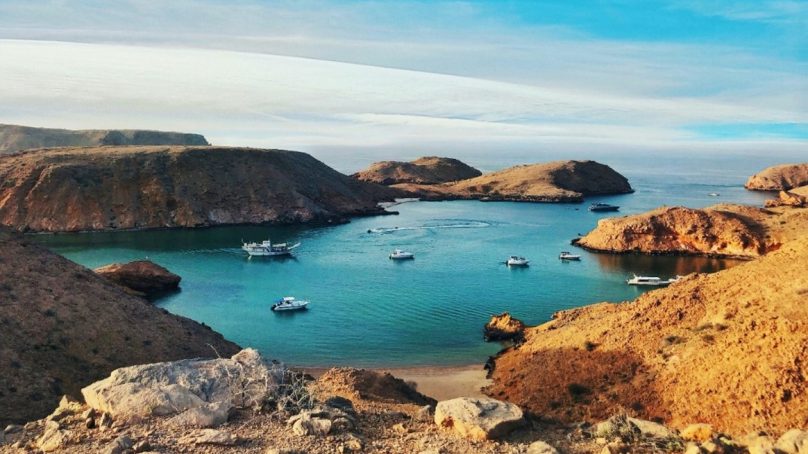

Projections for a surge in international visitors indicate Oman is on a trajectory to climb regional and global tourism ladders, thereby presenting a promising opportunity for potential investors.
Over the past year, Oman’s hospitality sector has shown strong recovery. While the official visitation statistics for 2023 remain unreleased, early indicators point to a 20 percent growth in tourism arrivals. Moreover, the STR report indicates that this resurgence is supported by a significant 16 percent increase in RevPAR nationwide.
Muscat, the hub of the country’s hospitality market, has mirrored this trend with an 18 percent increase in RevPAR. Furthermore, compared to the previous year, this indicates a robust and growing market for potential investors in the region.
Targeted development across diverse regions
Oman’s capital, Muscat, is seeing significant supply and demand growth, buoyed by government initiatives and private investments in tourism. Furthermore, emerging destinations like Bandar Jissah and Yiti in the Muscat Governorate, Salalah and Jabal Akhdar are introducing new hospitality projects soon. In addition, destinations have become hot spots for investors due to their unique natural and cultural offerings and serene beaches. Salalah’s seasonal greenery and the rugged, scenic landscapes of Jabal Akhdar attract attention for new resorts and hotels. Soon home to new holiday residences, wellness and leisure offerings, these areas enhance Oman’s appeal to tourists. Furthermore, the development momentum extends to secondary destinations such as Musandam, Duqm and Jabal Shams as well. Notably, each destination adds a distinct element to Oman’s tourism profile, enriching the Sultanate’s appeal as a multifaceted destination.
Government initiatives
Oman’s government commitment to diversifying its economy is evident in its proactive tourism policies over the past ten years. Consequently, these policies have led to the emergence of new destinations with fresh and exciting hospitality offerings. In addition, governmental efforts, such as easing visa regulations for tourists from China and Russia, have streamlined the process. This, in turn, has enhanced accessibility for international tourists, contributing to the sector’s growth significantly. Moreover, significant infrastructural investments, including Oman Airport expansion and improved road networks, bolster tourism and hospitality. Therefore, these efforts are pivotal to Oman’s intent to reduce oil dependence, with tourism earmarked as a critical growth sector.
In addition, people are now giving particular attention to adventure tourism, including activities such as caving, hiking, and ziplining. These initiatives are part of the broader scheme to promote 40 adventure tourism projects to boost Oman’s tourism sector by 2025. Moreover, such momentum builds on the foundation laid by Oman’s 2040 Tourism Strategy, which has increased tourist accessibility. Furthermore, Oman’s evolving commitment to sustainable tourism promotes low-impact developments like eco-lodges and experiential resorts.
Notably, Oman’s varied terrains and landscapes significantly enable a strong push into the adventure tourism sector, offering unique opportunities to visitors. These opportunities include journeying through deserts, scaling mountains and relaxing on scenic beaches. Additionally, the government’s dedication to preserving the country’s architectural heritage complements this versatility. This includes maintaining its traditional, understated urban design, enhancing Oman’s appeal to tourists. Ultimately, these efforts align closely with their tourism strategy, focusing on sustainable tourism and attracting tourists seeking genuine experiences. Consequently, Oman is crafting a distinctive value proposition with convincing destination branding and appeal.
Opportunities
Oman’s hospitality landscape offers substantial opportunities for diversification, attracting both local and international investors to the region. Investors and developers are increasingly drawn to innovative, eco-friendly and low-impact developments that meet the preferences of today’s travelers. Furthermore, these opportunities extend beyond remote natural settings to urban environments, integrating sustainability and adventure into the travel experience. This trend is evident in the rise of urban eco-hotels and adventure-centric accommodations across various Omani cities and towns. These accommodations cater to both ecological sustainability and Oman’s cultural richness, offering visitors authentic, environmentally conscious experiences.
Oman’s transformative journey in hospitality
The tourism sector is expected to see significant growth in the coming years, driven by strategic planning and investments. According to the latest Colliers forecasts, the nationwide number of tourism trips is expected to double to 7 million by 2028. Furthermore, this growth is expected to considerably bolster the direct contribution of tourism to the nation’s GDP over the coming years. From 2014 to 2019, tourism GDP grew on average by an impressive 5.5 percent per annum. Moreover, tourism GDP reached OMR 1.3 billion in 2019, reflecting substantial growth in the sector over those years. GDP share is estimated to grow from 2.1 percent in 2019 to approximately 5 percent by 2025. By 2040, the tourism sector’s GDP share is expected to reach an impressive 10 percent, highlighting its importance.
Oman is systematically positioning itself as a premier tourist destination in the MENA region, supported by its advantageous location. The country boasts diverse attractions and robust government support, enhancing its appeal to international tourists. As the country invests in its tourism infrastructure and implements forward-thinking policies, its visibility on the global stage will increase. By capitalizing on its unique appeal, Oman aims to attract a wider array of international visitors. This effort will further broaden and diversify its demand base, ensuring sustainable growth. This effort signifies the country’s transition into a dynamic, recognized travel destination.













